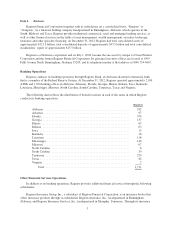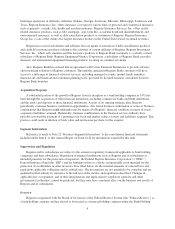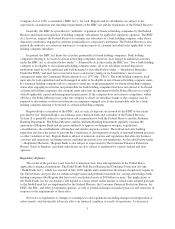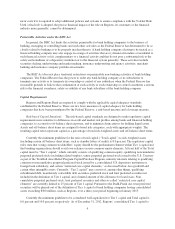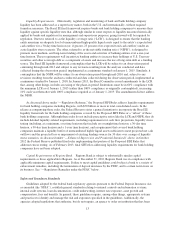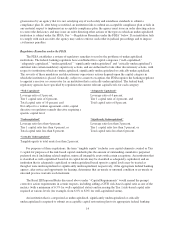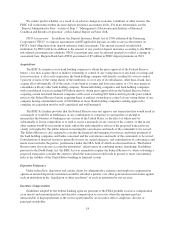Regions Bank 2012 Annual Report Download - page 27
Download and view the complete annual report
Please find page 27 of the 2012 Regions Bank annual report below. You can navigate through the pages in the report by either clicking on the pages listed below, or by using the keyword search tool below to find specific information within the annual report.On August 30, 2012, the Federal Reserve, the FDIC and the Office of the Comptroller of the Currency
published notices of three proposed rules implementing the Basel III capital provisions (the “Basel III Proposed
Rules”). Initial versions of the proposed rules were first published by the Federal Reserve on June 7, 2012. The
Basel III Proposed Rules generally follow the Basel III provisions, and, among other things, establish new risk-
based and leverage capital ratios (described below) and narrow the definition of what constitutes capital for
purposes of calculating those ratios. Also included in the Basel III Proposed Rules is a proposed rule that revises
and in effect replaces the general risk-based capital requirements currently in effect with a much more risk-
sensitive standardized approach similar to the standardized approach adopted by Basel II.
In particular, the Basel III Proposed Rules:
• introduce as a new capital measure “Common Equity Tier 1,” or “CET1,” specifies that Tier 1 capital
consists of CET1 and “Additional Tier 1 capital” instruments meeting specified requirements, defines
CET1 narrowly by requiring that most adjustments to regulatory capital measures be made to CET1
and not to the other components of capital, and expand the scope of the adjustments as compared to
existing regulations;
• require banks to maintain once the Basel III provisions are fully phased in:
• as a newly adopted international standard, a minimum ratio of CET1 to risk-weighted assets of at
least 4.5 percent, plus a 2.5 percent “capital conservation buffer” (which is added to the
4.5 percent CET1 ratio as that buffer is phased in, effectively resulting in a minimum ratio of
CET1 to risk-weighted assets of at least 7 percent);
• a minimum ratio of Tier 1 capital to risk-weighted assets of at least 6.0 percent, plus the capital
conservation buffer (which is added to the 6.0 percent Tier 1 capital ratio as that buffer is phased
in, effectively resulting in a minimum Tier 1 capital ratio of 8.5 percent upon full
implementation);
• a minimum ratio of Total (that is, Tier 1 plus Tier 2) capital to risk-weighted assets of at least
8.0 percent, plus the capital conservation buffer (which is added to the 8.0 percent total capital
ratio as that buffer is phased in, effectively resulting in a minimum total capital ratio of
10.5 percent upon full implementation);
• for institutions with less than $250 billion in consolidated assets and on-balance sheet foreign
exposures of less than $10 billion, a minimum leverage ratio of 4.0 percent, calculated as the ratio
of Tier 1 capital to total on-balance sheet exposures net of deductions from Tier 1 capital; and
• under some circumstances, a “countercyclical capital buffer,” generally to be imposed when
national regulators determine that excess aggregate credit growth becomes associated with a
buildup of systemic risk, that would be a CET1 add-on to the capital conservation buffer in the
range of 0 percent to 2.5 percent when fully implemented (potentially resulting in total buffers of
between 2.5 percent and 5 percent). Under the Basel III Proposed Rules, as originally drafted, the
countercyclical capital buffer only applies to institutions with more than $250 billion in
consolidated assets or on-balance sheet foreign exposures greater than $10 billion.
The capital conservation buffer is designed to absorb losses during periods of economic stress. Banking
institutions with a ratio of CET1 to risk-weighted assets above the minimum but below the conservation buffer
(or below the combined capital conservation buffer and countercyclical capital buffer, when the latter is applied)
will face constraints on dividends, equity repurchases and compensation based on the amount of the shortfall.
Citing the large number of comments received in response to the Basel III Proposed Rules, on November 9,
2012 the Federal Reserve issued a press release indefinitely delaying the effective date of the proposed rules and
the Basel III capital requirements. As of February 2013, no additional guidance has been provided regarding the
effective dates for the Basel III Proposed Rules and the Basel III capital framework.
11




